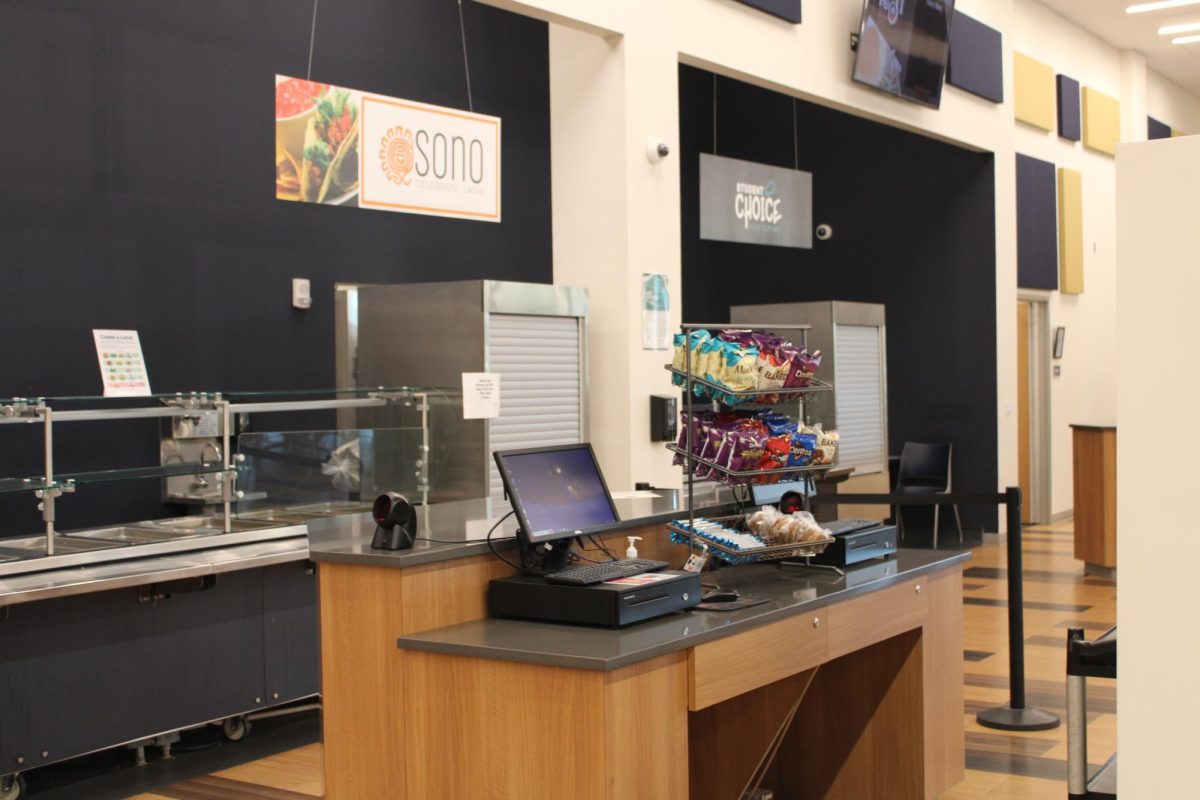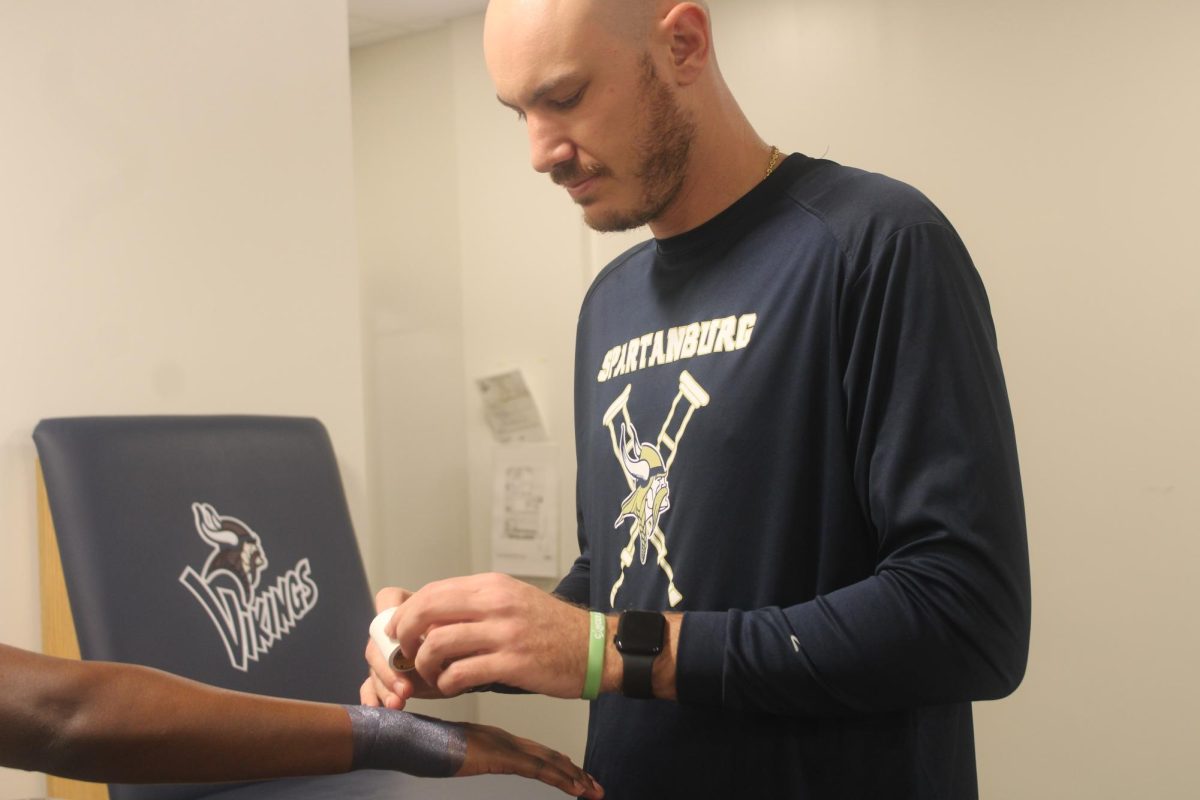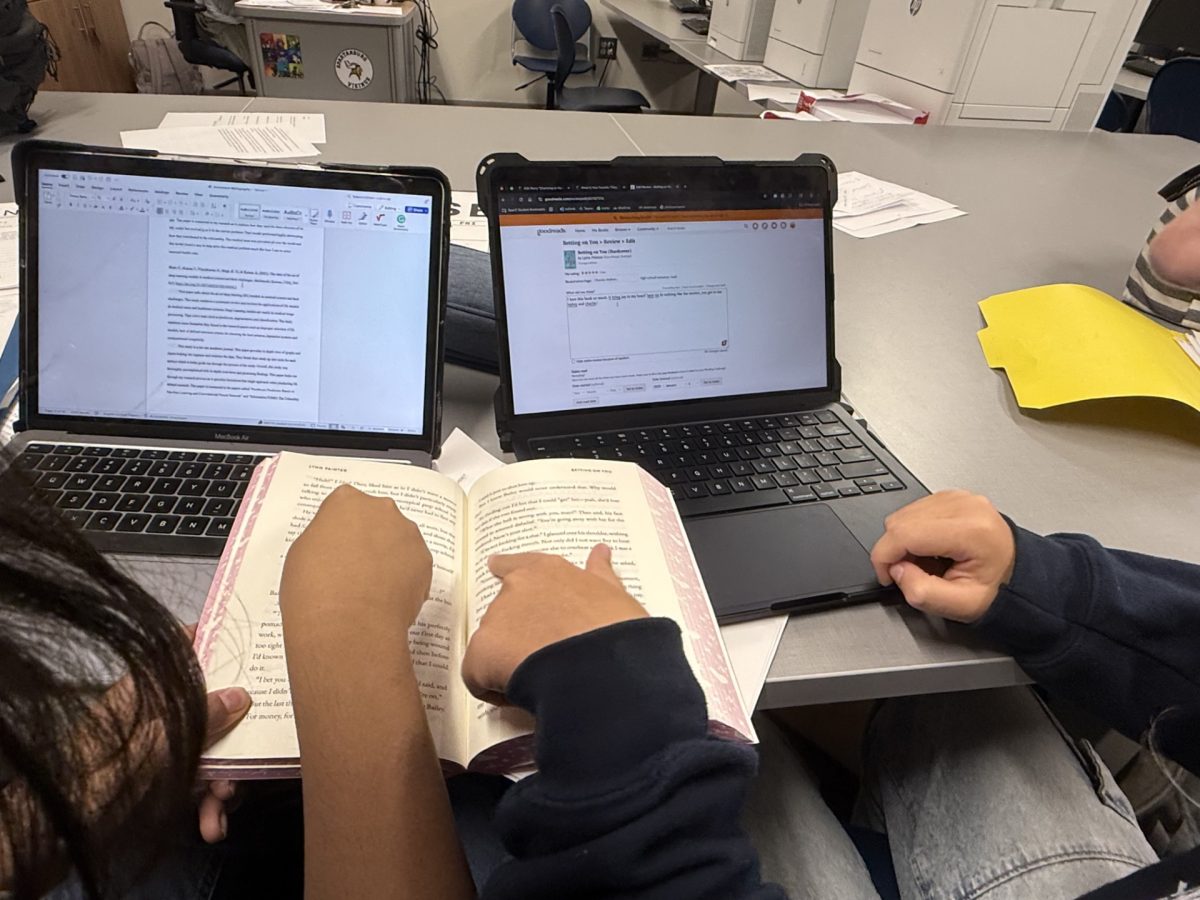Each day, students around the world take a break from their busy school days to have lunch. In recent years, American school lunches have sparked debates over their quality, variety and nutritional value. Every country’s school lunch reflects its culture, local resources and the priorities of its schools.
At Spartanburg High School (SHS), free breakfast and lunch are offered to students with an ID. Breakfast options include Pop-Tarts or a variety of breakfast sandwiches. Lunch options feature Papa John’s cheese pizza, an On-the-Go section with different sandwiches, a deli section, the Grill, and the Sono section with Mexican-inspired meals.
Krystian Littlejohn (12) enjoys the school lunch she gets daily.
“I love that every day you have different options to choose from. I think it’s a good comparison to other schools because we might get a healthier meal. Some days, though, I feel like they could add new things to the menu that more students will eat and have more variety every now and then,” Littlejohn said.
One growing trend for schools is to offer more vegan, vegetarian and gluten-friendly options to accommodate a wider range of students.
The Hunger-Free Kids Act of 2010, signed by former President Obama, aimed to provide students with healthier options and portion control during school lunchtime.
Kenny Le (10) believes SHS school lunch is relatively good compared to other schools in the country.
“I think that maybe if we had better student choice options, there would be more choices for all the kids,” Le said.
Schools face a difficult decision when it comes to student preferences. A plate full of veggies and produce may not be as appealing to students, which makes it more expensive and wasteful. A shipment of frozen pizza is inexpensive, lasts a long time, and is well-liked by most students. School boards must consider student preferences, cost and waste when determining cafeteria menus.
According to The Washington Post, an estimated 30.6 million students rely on school lunches instead of bringing meals from home. A study from the University of Michigan Health found that students who eat school lunches are at a higher risk of obesity.
The correlation between adolescent obesity and American school lunches has prompted government officials to look to other countries that do not face the same issue as the U.S.
In Greece, schoolchildren eat baked chicken over orzo, stuffed grape leaves, tomato and cucumber salad, and fresh oranges. The average Brazilian school lunch includes pork mixed with veggies, black beans, rice, fresh bread and baked plantains.
Many of these international school lunches offer a greater variety and volume of fruits and vegetables compared to American school lunches. Additionally, these meals are made fresh rather than being frozen and then fried.
However, schools across the U.S. are improving their menus with farm-to-table initiatives by supporting local farms.
In an interview with the Los Angeles Daily News, Jennifer Siebel, California’s first partner, said:
“I’m so committed to expanding California farm-to-school programs to ensure that students have access to these fresh local fruits and vegetables, while strengthening connections between farmers and agriculture and local schools,” Siebel said.









